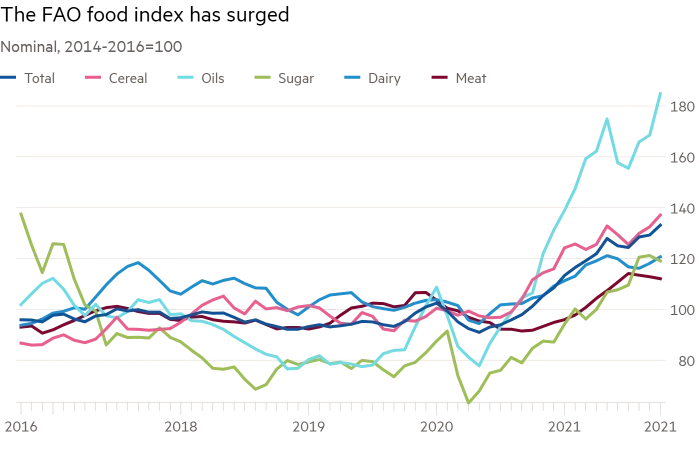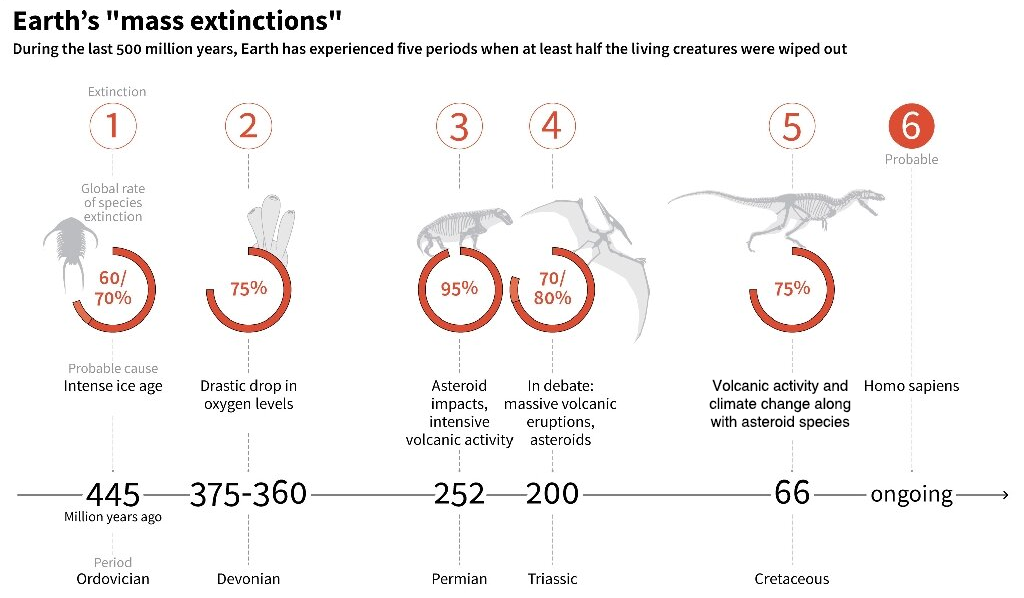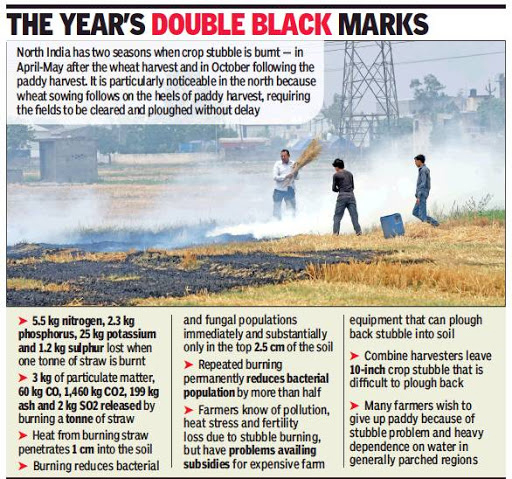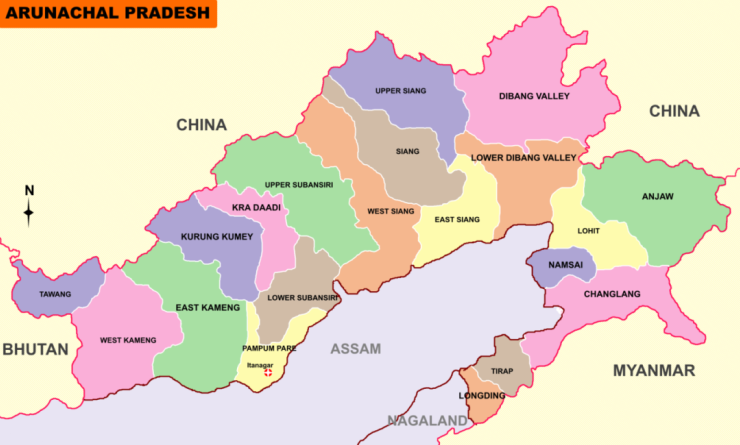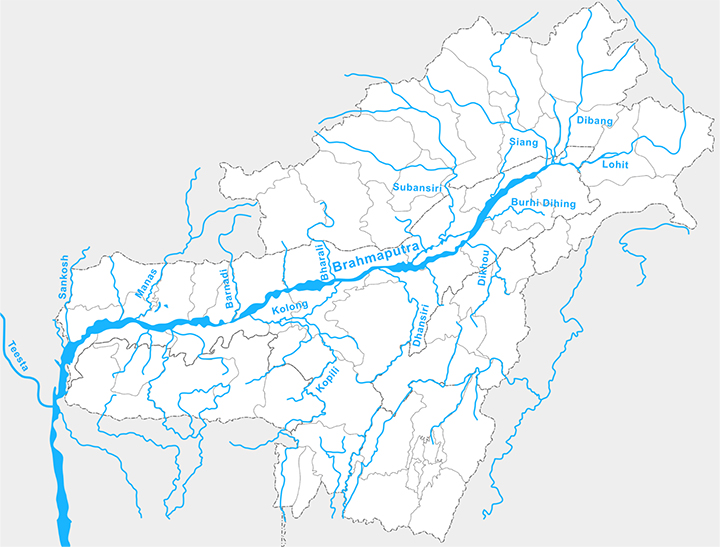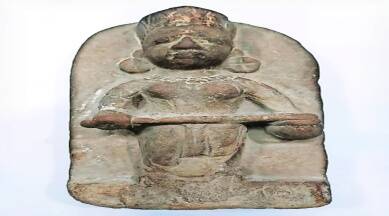India-France Defence Partnership
Why in News
Recently, at the India-France strategic dialogue, both countries resolved to expand the defence and security partnership by enhancing intelligence sharing, bolstering capabilities, expanding military drills and pursuing new initiatives in maritime, space and cyber domains.
Key Points
- Highlights of the Dialogue:
- Support to ‘Atmanirbhar Bharat’: France reiterated its commitment to India’s vision of “Atmanirbhar Bharat (self-reliant India)” and defence industrialisation, joint research and technology development in India across a wide range of advanced capabilities.
- France’s Indo-Pacific Strategy: France stressed its continuing commitment to the Indo-Pacific region as a “resident power”, and partnership with India as a “major pillar” of its strategy for the region.
- Moreover, the French Presidency of the European Union (EU) in the first half of 2022 is expected to give a further shape to the EU’s engagement in the Indo-Pacific region.
- A resident power is one that does not own territory or have a territorial presence in a particular region of the world, but is nevertheless a force to be reckoned with in the international politics of that region.
- Significance of the Meeting: France’s reiteration to expand strategic cooperation with India has come after the unveiling of a new security alliance (AUKUS) by Australia, the UK and the US.
- The unexpected announcement of the alliance, which involves building submarines for Australia, had angered the French government after Australia pulled out of a separate submarine deal with France.
- AUKUS is a new trilateral security partnership for the Indo-Pacific, between Australia, the UK and the US (AUKUS).
- India-France Strategic Relations:
- Background:
- France was one of the first countries with which India signed a “strategic partnership” after the end of the Cold War, in January 1998.
- France was one of the very few countries to support India’s decision to test nuclear weapons in 1998.
- Defence Cooperation: Both countries have a defence dialogue at the Ministerial level.
- The three services have regular defence exercises; viz.
- Exercise Shakti (Army)
- Exercise Varuna (Navy)
- Exercise Garuda (Air Force)
- Recently, the Indian Air Force (IAF) has inducted French Rafale multi-role combat aircraft.
- India entered into a contract with a French firm to build six Scorpene submarines in India’s Malegaon dockyards through a technology-transfer arrangement in 2005.
- The two countries also signed the Agreement regarding the Provision of Reciprocal Logistics Support.
- This agreement will help to facilitate the replenishment of fuel, rations, spares, and berthing and maintenance for the other nations’ warships, military aircraft and troops during routine port calls, as well as during Humanitarian Assistance and Disaster Relief (HADR).
- The three services have regular defence exercises; viz.
- Indian Ocean, the Common Shared Interest:
- France needs to protect its colonial territorial possessions like reunion island and Indian ocean being the zone of influence for India.
- Recently, France became the 23rd member of the Indian Ocean Rim Association (IORA).
- It is the first time that a country whose mainland is not on the Indian Ocean has been brought into the fold of the IORA.
- Counter Terrorism: France backed the India’s proposal for a global conference on terrorism. Both the countries also support organising a new “No Money for Terror” - an International Conference on Fighting Terrorist Financing.
- France Backing India: France also continues to steadfastly back India on Kashmir while its relations with Pakistan have plummeted in the recent past and China has become an object of suspicion.
- Background:
Way Forward
- France, which had sought strategic autonomy within the framework of its alliance with the US, and India, which has valued independent foreign policy, are natural partners in building the new coalitions for an uncertain era.
- France also opens the pathway for deeper engagement with Europe on global issues, especially after uncertainty in the region due to BREXIT.
The new partnerships with France, Germany and other like-minded countries like Japan would hopefully turn out to be far more consequential for India’s influence on the global stage.
Oil and Food Prices
Why in News
Recently, the United Nations Food and Agriculture Organisation (FAO) released data showing its world Food Price Index (FPI) the highest since July 2011.
- Food supplies and prices are under pressure from extreme weather, disturbed supply chains, worker shortages and rising costs.
Key Points
- Food & Fuel Move Intandem:
- One reason why petroleum and agri-commodity prices move in tandem is the bio-fuels link.
- When crude prices rise, blending ethanol from sugarcane and corn (maize) with petrol or diverting palm and soybean oil for biodiesel production becomes that much more attractive.
- Cotton, likewise, turns relatively affordable vis-à-vis petrochemicals-based synthetic fibres.
- Also, since corn is primarily an animal feed, its diversion to ethanol leads to substitution by other grains, including wheat, for livestock use.
- That, then, pushes up prices of foodgrains as well.
- The same happens to sugar, as mills step up the proportion of cane crushed for fermenting into alcohol.
- But it is not only the bio-fuels effect alone, large price increases also tend to have an effect on other farm produce through creation of positive sentiment.
- Economic Activity and Stimuli:
- The positive sentiment of the market is connected with two things:
- The first is the demand returning with revival of economic activity worldwide amid receding pandemic cases and rising vaccination rates.
- The second is the liquidity infused by the US Federal Reserve and other global central banks, to limit the economic damage wreaked by Covid-19.
- All this money, combined with the policy-induced ultra-low global interest rates, has found its way into stock markets, start-up investments and also commodities.
- However, since restoration of supply chains hasn’t kept pace with the demand recovery — manifested in congestion at ports, shortage of shipping containers/vessels and labourers yet to fully return to plantations — the overall result has been inflation.
- The positive sentiment of the market is connected with two things:
- Impact on Farmers:
- Some products like Kapas (raw unginned cotton) and Soyabean are selling at prices well above the government’s Minimum Support Price (MSP).
- On the flip side, however, farmers are being forced to pay much more for fuel and fertilisers, as their international prices have shot up.
- Fertilizers:
- The situation is worse in fertilisers, Di-ammonium phosphate (DAP) is currently being imported into India at USD 800 per tonne, including cost and ocean freight. Muriate of potash (MOP) is available for no less than USD 450 a tonne.
- These are close to the prices that prevailed during the world food crisis of 2007-08.
- DAP and MOP are non-urea fertilisers.
- Together with fertilisers, the prices of their intermediates and raw materials such as rock phosphate, sulphur, phosphoric acid and ammonia have also skyrocketed due to a combination of demand-pull (from higher crop plantings) and cost-push (from oil and gas).
- The situation is worse in fertilisers, Di-ammonium phosphate (DAP) is currently being imported into India at USD 800 per tonne, including cost and ocean freight. Muriate of potash (MOP) is available for no less than USD 450 a tonne.
Food Price Index
- It was introduced in 1996 as a public good to help in monitoring developments in the global agricultural commodity markets.
- The FAO Food Price Index (FFPI) is a measure of the monthly change in international prices of a basket of food commodities.
- It measures changes for a basket of cereals, oilseeds, dairy products, meat and sugar.
- Base Period:2014-16.
Haryana State Employment of Local Candidates Act, 2020
Why in News
Recently, the Haryana Government has said that the Employment of Local Candidates Act, 2020 will be implemented in the state from 15th January 2022.
Key Points
- About the Law:
- It requires firms with 10 or more employees to reserve 75% of all jobs offering a salary of less than Rs. 30,000 a month for eligible candidates of State domicile.
- Jobs will be provided in various companies, societies, trusts, and limited liability partnership firms situated in the state.
- The move is aimed at disallowing the influx of talent from other parts of the country even in sectors like IT and IT-enabled services (ITes), which the State does not have enough captive supply of.
- The law will be applicable for a period of 10 years.
- The state government also relaxed the residency (domicile) requirement from 15 to 5 years for a person to get a bona fide resident certificate in the state to provide some flexibility to the private companies in hiring.
- It will be mandatory for all these employers to register all their employees drawing gross monthly salary or wages not more than Rs 30,000 on the designated portal available on the official website of the Labour Department, Haryana.
- Violation of any provision of this Act will be a punishable offence.
- It requires firms with 10 or more employees to reserve 75% of all jobs offering a salary of less than Rs. 30,000 a month for eligible candidates of State domicile.
- Concerns:
- Can Trigger Exodus of Investors:
- It could trigger an exodus of large domestic and multinational investors across sectors such as auto, IT that rely on highly skilled manpower.
- Affect Existing Industries:
- Raising the son of the soil issue and preventing free movement of manpower resources in the State from other regions can have an adverse effect on the existing industries in the State.
- This may force those tech giants and other industries to shift their base from Haryana to other States and drain out the State’s monetary resources to that extent.
- Raising the son of the soil issue and preventing free movement of manpower resources in the State from other regions can have an adverse effect on the existing industries in the State.
- Can Cause Extreme Talent Crunch:
- Moreover, imposing the reservations on gig and platform companies could create a crippling talent crunch.
- Against the Constitution:
- The Constitution of India guarantees freedom of movement and consequently employment within India through several provisions.
- Article 14 provides for equality before law irrespective of place of birth.
- Article 15 guards against discrimination based on place of birth.
- Article 16 guarantees no birthplace-based discrimination in public employment.
- Article 19 ensures that citizens can move freely throughout the territory of India.
- The Constitution of India guarantees freedom of movement and consequently employment within India through several provisions.
- Can Trigger Exodus of Investors:
- Other Such Attempts:
- AAP (Political Party) chief has promised 80% reservations for locals in private jobs in poll-bound Goa and he made a similar promise for Uttarakhand too.
- This follows in the footsteps of states like Haryana, Jharkhand, Maharashtra, Andhra and Madhya Pradesh that have already implemented or tried to implement similar populist policies.
- Reasons Behind Such Legislations:
- Vote Bank Politics: Inter-state migrant workers (ISMW) constitute a sizeable “under-used or un-used” electorate as they often do not exercise voting rights. If these workers and potential migrants could be retained through Job For Locals Legislations (JRFL) and provided with jobs, the parties’ electoral causes will be served.
- Economic Sluggishness: The native unemployment issue assumes relevance as joblessness has intensified in the context of shrinking government employment.
- Increased Incomes and Talent: Job For Locals Legislations will not only retain talent but also incomes which otherwise will go to “other regions”.
- Precondition for Land Acquisition: Farmers and villagers, who lose their land in the process of land acquisition for industries, keep such preconditions in which industries have to provide jobs to local youth.
Way Forward
- The Haryana government should consider lowering the original salary ceiling of Rs. 30,000 a month to Rs. 15,000 a month on a 'cost to company' basis and raise it in tandem with efforts to improve skill sets in the State. The reservation, if any, should begin from 20%-25% as technical and specialised skill sets will take time to inculcate among the State's youth.
- The best way to grow out of Job For Locals Legislations (JRFL) attempts of various state governments is to ensure economic recovery and provide enough job opportunities for youths with skill training and proper education as key focus areas, enabling the masses to compete in the free market.
Mass Extinction
Why in News
Recently, a paper published in the international journal Nature Geoscience has come up with a new reason behind the first mass extinction, also known as the Late Ordovician mass extinction.
- It notes that the cooling climate likely changed the ocean circulation pattern. This caused a disruption in the flow of oxygen-rich water from the shallow seas to deeper oceans, leading to a mass extinction of marine creatures.
Key Points
- Mass Extinction (Meaning):
- A mass extinction event is when species vanish much faster than they are replaced.
- This is usually defined as about 75% of the world's species being lost in a 'short' amount of geological time - less than 2.8 million years.
- Mass Extinctions So Far:
- First Mass Extinction: The Ordovician mass extinction that occurred about 445 million years ago killed about 85% of all species.
- Second Mass Extinction: The Devonian mass extinction (about 375 million years ago) wiped out about 75% of the world’s species.
- Third Mass Extinction: The Permian mass extinction (about 250 million years ago) also known as the Great Dying caused the extinction of over 95% of all species.
- Fourth Mass Extinction: The Triassic mass extinction (about 200 million years ago) eliminated about 80% of Earth’s species, including some dinosaurs.
- Fifth Mass Extinction: This Cretaceous mass extinction (about 65 million years ago) is known for wiping out non-avian dinosaurs.
- About the Latest Findings:
- New Explanations: There have been several theories behind each mass extinction and with advances in new technologies, researchers have been uncovering more intricate details about these events.
- Traditional Thought: For decades, the prevailing school of thought was that volcanism-induced global warming causes the oceans to lose oxygen and thus impact marine habitability, potentially destabilising the entire ecosystem.
- New School of Thought: In recent years, mounting evidence points to several episodes in the Earth’s history when oxygen levels also dropped in cooling climates.
- Ordovician climate and marine biogeochemical cycles during that period showed “seafloor and upper-ocean oxygenation in response to ongoing global cooling.”
- This led to deep-sea anoxia affecting ocean circulation.
- Thus, the paper concludes that climate cooling may have led to changes in nutrient cycling, primary producer communities which ultimately drove the Late Ordovician mass extinction.
- Ordovician climate and marine biogeochemical cycles during that period showed “seafloor and upper-ocean oxygenation in response to ongoing global cooling.”
- Ongoing Sixth Mass Extinction and Impact:
- Sixth Mass Extinction:
- Some researchers have pointed out that we are currently experiencing a sixth mass extinction as the result of human-induced climate change (referred to as the Anthropocene extinction).
- Currently, only an estimated 2% of all of the species that ever lived are alive but the absolute number of species is greater than ever before.
- It is described as the most serious environmental problem since the loss of species will be permanent.
- The loss of species has been occurring since human ancestors developed agriculture over 11,000 years ago. Since then, the human population has increased from about 1 million to 7.7 billion.
- Some researchers have pointed out that we are currently experiencing a sixth mass extinction as the result of human-induced climate change (referred to as the Anthropocene extinction).
- Possible Impact:
- The extinction of the species causes tangible impact such as in the form of a loss in crop pollination and water purification.
- Further, if a species has a specific function in an ecosystem, the loss can lead to consequences for other species by impacting the food chain.
- The effects of extinction are expected to worsen the genetic and cultural variability which would change entire ecosystems.
- When genetic variability and resilience is reduced, its contribution to human welfare may be lost.
- Sixth Mass Extinction:
Impact of Stubble Burning on Respiratory Health
Why in News
A study was conducted in Punjab that showed pollution from stubble burning significantly reduced lung function and was particularly harmful to women in rural Punjab.
- The study was conducted in two phases: The first was in October 2018 and again the following summer from March to April 2019.
Key Points
- High PM2.5 levels:
- The concentration of PM2.5 (Particulate Matter-2.5) was found to increase more than twice between the two phases, from 100 g/m3 to 250 g/m3.
- PM2.5 refers to particles that have a diameter less than 2.5 micrometres (more than 100 times thinner than a human hair) and remain suspended for longer.
- It causes respiratory problems and also reduces visibility. It is an endocrine disruptor that can affect insulin secretion and insulin sensitivity, thus contributing to diabetes.
- Incidentally these are around 10-15 times the WHO (World Health Organisation) prescribed air quality standards though the permissible standards by India’s Central Pollution Control Board (CPCB) are higher.
- WHO: The annual average concentrations of PM2.5 should not exceed 5 µg/m3, while 24-hour average exposures should not exceed 15 µg/m3 more than 3 - 4 days per year.
- CPCB: The annual average concentrations of PM2.5 should not exceed 40 µg/m3, while 24-hour average exposures should not exceed 60 µg/m3 more than 3 - 4 days per year.
- The concentration of PM2.5 (Particulate Matter-2.5) was found to increase more than twice between the two phases, from 100 g/m3 to 250 g/m3.
- Impact:
- A two to three-fold increase was noted in most of the respiratory symptoms including wheezing, breathlessness on exertion, skin rashes, itchiness of eyes etc. across all age groups (10-60 years).
- The highest number of respiratory complaints were reported by the elderly population (>40-60).
- There was decline in lung function with an increase in PM2.5 concentration.
- A 10-14% decline in lung function in men and nearly 15-18% decline in women across all age categories was noted.
- A two to three-fold increase was noted in most of the respiratory symptoms including wheezing, breathlessness on exertion, skin rashes, itchiness of eyes etc. across all age groups (10-60 years).
Stubble Burning
- About:
- Stubble (parali) burning is the act of setting fire to crop residue to remove them from the field to sow the next crop.
- In order to plant the next winter crop (Rabi crop), farmers in Haryana and Punjab have to move in a very short interval and if they are late, due to short winters these days, they might face considerable losses. Therefore, burning is the cheapest and fastest way to get rid of the stubble.
- It begins around October and peaks in November, coinciding with the withdrawal of southwest monsoon.
- Effects of Stubble Burning:
- Pollution:
- Emits large amounts of toxic pollutants in the atmosphere which contain harmful gases like methane (CH4), Carbon Monoxide (CO), Volatile Organic Compound (VOC) and carcinogenic polycyclic aromatic hydrocarbons.
- These pollutants disperse in the surroundings, may undergo a physical and chemical transformation and eventually adversely affect human health by causing a thick blanket of smog.
- Soil Fertility:
- Burning husk on the ground destroys the nutrients in the soil, making it less fertile.
- Heat Penetration:
- Heat generated by stubble burning penetrates into the soil, leading to the loss of moisture and useful microbes.
- Pollution:
- Alternatives to Stubble Burning:
- In-Situ Treatment of Stubble: For example crop residue management by zero-tiller machine and Use of bio-decomposers.
- Ex-Situ (off site) Treatment: For example use of rice straw as cattle fodder.
- Use of Technology- For example Turbo Happy Seeder (THS) machine, which can uproot the stubble and also sow seeds in the area cleared. The stubble can then be used as mulch for the field.
- Changing Cropping Pattern: It is the deeper and more fundamental solution.
- Bio Enzyme-PUSA: The Indian Agriculture Research Institute has devised a radical solution for stubble burning in the form of a bio-enzyme called PUSA.
- It leads to an increase in organic carbon and soil health while significantly reducing the fertiliser expense for the next cropping cycle.
- Other Action Plan:
- The State Governments of Punjab, National Capital Region (NCR) States and Government of National Capital Territory of Delhi (GNCTD) have developed detailed monitorable action plans based on the framework by the Commission for Air Quality Management (CAQM) to tackle the problem of air pollution.
Way Forward
- Imposing a fine is not going to work in our socio-economic conditions for curbing stubble burning. There is a need to focus on alternative solutions.
- Although the government is distributing but everyone is not getting the machines for in-situ management. The government should ensure their availability to everyone.
- Similarly, in ex-situ management, some companies have started collecting stubble for their use, but more effort on this front is needed.
Logos of Darjeeling Toy Train as Intellectual Property
Why in News
Recently, India has finally registered the logos (two) of the iconic ‘Toy Train’ internationally as its intellectual property.
- The claim for registration was sent to the World Intellectual Property Organisation (WIPO) with the procedure laid down in WIPO’s Vienna Classification (VCL). There is a six-month window to register any counter-claims, following which the Indian government’s claim will receive international approval.
Key Points
- About:
- The use of these logos anywhere in the world will now require written permission from India and the payment of a fee.
- The DHR has two logos, both of which have been patented. The process of registering the logo with the Controller General of Patents, Designs and Trademarks under the Union Ministry of Commerce and Industry was initiated in August 2021. It was then sent to the WIPO.

- Both logos are over a century old, and popular in world heritage circuits.
- They are used randomly on merchandise and communications materials by various commercial organisations in Europe, the UK and the US; even the West Bengal government has used it in communications and on merchandise in the past.
- Significance: This will put the Darjeeling Toy Train’s ‘Iron Sherpa’ blue steam locomotives on the same pedestal as the legendary transalpine Rhaetian Railway in Switzerland, and is likely to boost its recognition and prominence around the world.
- DHR:
- DHR was built in the British era between 1879 and 1881.
- It is located in the foothills of the Himalayas in West Bengal.
- It is the most outstanding example of a hill passenger railway. Its design applies bold and ingenious engineering solutions to the problem of establishing an effective rail link across a mountainous terrain of great beauty.
- It was declared a UNESCO (United Nations Educational, Scientific and Cultural Organization) World Heritage Site in 1999.
- Other Mountain Railways Declared as World Heritage Sites:
- Nilgiri Mountain Railways located in the Nilgiri Hills of Tamil Nadu (South India) (2005)
- Kalka Shimla Railway located in the Himalayan foothills of Himachal Pradesh (Northwest India) (2008).
- Other Mountain Railways Declared as World Heritage Sites:
WIPO’s Vienna Classification
- VCL is an international classification system established in 1973 by the Vienna Agreement Establishing an International Classification of the Figurative Elements of Marks, and administered by the World Intellectual Property Organization (WIPO).
- WIPO is one of the oldest specialized agencies of the United Nations. It is headquartered in Geneva, Switzerland.
- It consists of a hierarchical system that proceeds from the general to the particular, classifying the figurative elements of marks into categories, divisions and sections, on the basis of their shape.
Kaho Village: Arunachal Pradesh
Why in News
Arunachal Pradesh is planning to make a documentary on Kaho, a village on the China border to mark the 75th year of Independence.
Key Points
- About:
- Kaho is the first village from the China border in Anjaw district.
- Anjaw is one of the 11 districts of Arunachal Pradesh that share their border with China.
- According to the 2011 census, Kaho has only 65 residents and a literacy rate of 64.15%.
- A documentary on the village and the locals who belong to the Meyor tribe will be made.
- Meyor is a small tribe constituting a small population that dwells in Kibithoo and Walong circles of the district.
- Meyors are also animists like the Mishmis but they have also adopted Mahayana Buddhism.
- All tribes of Arunachal Pradesh include: Abor, Aka, Apatani, Dafla, Galong, Khampti, Khowa, Mishmi, Monpa, Momba, Any Naga tribes, Sherdukpen, Singpho”.
- One of seven villages in the Kibithoo block bisected by the Lohit river, Kaho had weathered the Chinese attack in 1962. Its people had assisted the Indian soldiers who had been outnumbered.
- Kaho is the first village from the China border in Anjaw district.
- Lohit River:
- It is a tributary to the Brahmaputra River.
- Brahmaputra River originates under the name of Siang or Dihang, from the Chemayungdung glacier of the Kailash range near the Mansarovar lake (Tibet). It enters India west of Sadiya town in Arunachal Pradesh.
- It originates in eastern Tibet, in the Zayal Chu range and surges through Arunachal Pradesh for 200 km, before reaching in the plains of Assam.
- It is a tributary to the Brahmaputra River.
Goddess Annapurna Idol
Why in News
Recently, an ancient idol of Goddess Annapurna was brought back to India after over a century from Canada.
- The Idol was received by the Archaeological Survey of India (ASI). It will be placed in its original location - the Kashi Vishwanath temple.
- This idol was smuggled out of the country somewhere around 1913.
Key Points
- About:
- Goddess Annapurna: She is the goddess of food. She is also known as the manifestation of the goddess Parvati, partner to Lord Shiva.
- The idol holds a bowl of kheer in one hand and a spoon in the other.
- Benares Style: The 18th-century idol, carved in the Benares style, was part of the collection at the MacKenzie Art Gallery at the University of Regina, Canada.
- Varanasi, also known as Benares, Banaras, or Benaras or Kashi or Kasi, is a famous Hindu holy city situated on the banks of the river Ganges in the Indian state of Uttar Pradesh. It is the rich cultural tradition of Varanasi that makes it the cultural capital of India.
- Goddess Annapurna: She is the goddess of food. She is also known as the manifestation of the goddess Parvati, partner to Lord Shiva.
- Kashi Vishwanath Temple: It is one of the most famous Hindu temples dedicated to Lord Shiva.
- It is located in Varanasi, Uttar Pradesh.
- The temple stands on the western bank of the river Ganga, and is one of the twelve Jyotirlingas, the holiest of Shiva temples.
- It was constructed in the year 1780 by the Maratha monarch, Maharani Ahilyabai Holkar of Indore.
Archaeological Survey of India (ASI)
- ASI, under the Ministry of Culture, is the premier organization for the archaeological research and protection of the cultural heritage of the nation.
- It administers more than 3650 ancient monuments, archaeological sites and remains of national importance.
- Its activities include carrying out surveys of antiquarian remains, exploration and excavation of archaeological sites, conservation and maintenance of protected monuments etc.
- It was founded in 1861 by Alexander Cunningham- the first Director-General of ASI. Alexander Cunningham is also known as the “Father of Indian Archaeology”.
- ASI functions under the provisions of the Ancient Monuments and Archaeological Sites and Remains Act, 1958 (or AMASR Act).


